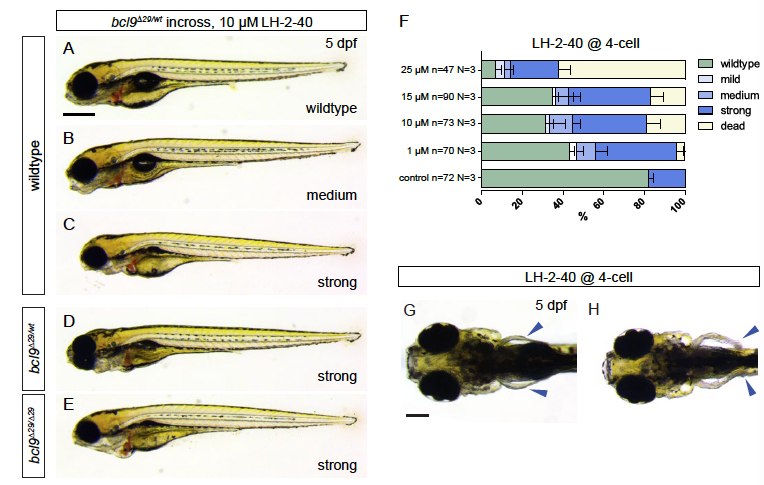Fig. S8
Functional inhibition of Bcl9- -catenin-interaction in bcl9∆29 mutants and wildtype leads to craniofacial, cardiac, and fin defects.
(A-E) Embryos obtained from a heterozygous bcl9∆29 (bcl9∆29/wt) incross were treated with 10 µM LH-2-40 from 4-cell stage on, lateral views, anterior to the left. Phenotype classes as described in Figure 4 were observed independent of the genotype of the embryo. (F) General phenotype penetrance is comparable to wildtype embryos treated with 10 µM LH-2-40 from 4-cell stage on (see Figure 4F). Nevertheless, the penetrance of strong phenotypes is increased in treated bcl9∆29 crosses. (G,H) In addition to cardiac and craniofacial defects, Bcl9-inhibited embryos (wildtype or bcl9∆29 incrosses) are characterized by readily observable fin defects not observed in untreated bcl9∆29 mutants (arrow heads H, compare to control in G).

